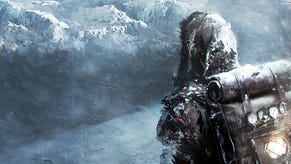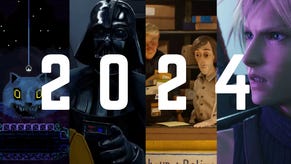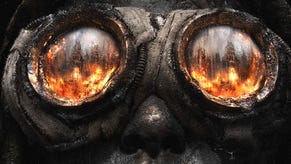Frostpunk 2 set off a personal and ideological storm in my head
This lore of mine.
Frostpunk developer 11 Bit Studios doesn't engage with the question of whether video games should tackle ideological questions, so much as it takes that engagement as a given. It's an axiom baked into the DNA of everything from This War of Mine, which presented the cruelties of war from a civilian perspective, to the original Frostpunk and now Frostpunk 2 - the studio's philosophical magnum opus, the culmination of years of experimentation with what I like to call its ideological simulators.
It's an approach that works so well precisely because it relentlessly assails the player with difficult social, political, and economic choices, rather than providing an escape from them. Perhaps Frostpunk 2's greatest achievement, however, is what it manages to stimulate outside of play. Rarely has a game prompted me to engage in so much consideration of its themes and possible reference texts, or encouraged so much introspection.
That said, my reference texts might not be your reference texts. I spent my childhood in freshly post-Soviet Russia, which was going through a social, political, and economic adjustment so extreme the contours of it are still imprinted on my brain today. I spent my winters in a city flat; I remember minus-20-degree days and the faint haze of smog over city rooftops. The summers were at my grandfather's dacha - there was one telephone for the entire village; we walked to a well for fresh water; the black and white TV received one channel; the heating came from a brick stove that we gathered wood for from the nearby forest. There are difficult memories and happy memories, but collectively they form a tenor that channels a certain culture and history, and perhaps a time before the one I lived in.

Frostpunk 2 is set in 1916 in what ostensibly feels like alternate history Victorian England, but somehow it manages to speak to me. But its central themes - survival, hope, prosperity, community, progress - are universal enough that I suspect it will speak to you, too, even if that tenor is different. In the meantime, indulge me; like Frostpunk's disparate factions, we might find some common ground.
The primary aim remains to guide and develop a fuel-guzzling city through an ice age. Build housing, industrial districts, and special structures to gather and store resources. Research new social, legal, and technological theories, and vote on these in the Council, pulled in different directions by numerous factions. Explore the surrounding Frostland, and, above all, keep the power generator working. Many of these systems are new, but the most striking difference between Frostpunk 2 and its predecessor is the scale. As Bertie notes in his review, "The biggest change between the two games is conceptual... The question is not whether you can survive but how. It's zoomed out...You'll control cities that are incomparably larger than the ones you finished the first game with."
In literal terms, this means you now rarely see individual citizens working, socialising, or suffering; you need to click on a city district and use a "zoom in" button to do this. The view this presents, intentionally or not, looks very much like a toy box: tiny silhouettes milling around fantastical buildings without much sense of routine or purpose. In thematic terms, it equates to the removal of the individual from your calculations as a ruler - a literal and figurative abstraction, that means all you see are the numbers and how they move the dials of your city's metrics.




It symbolises the quiet tyranny of administration. It's not overt oppression, but the disregard for single citizens that comes with having to aggregate and homogenise to make something on this scale digestible. You could argue it's no different to other strategy games, which must aggregate in order for the player to make sense of their gameplay systems, but it's Frostpunk 2's themes - unique in their arrangement - that send me down this train of thought. The spectre of a centrally planned economy hangs uneasy over my coal-stained city and dredges up ghosts of past conversations: collective disgust at the shock therapy economics of 90s Russia; my grandad arguing that the rot went back to the 20s, when Lenin had made free market concessions to ease collectivisation efforts.
Frostpunk 2's zoomed out perspective is all the more effective because it frequently intrudes with quotes or scenarios which focus on the consequences of my decisions for a select few citizens. Unlike in the first game, where they felt like a dialogue with my community, here these scenarios can seem like screams from the void, reminders or pleas to the exalted leader that their decisions for the many can disastrously affect the few. Frostpunk's Steward of the city is an uneasy analogue to the concept of "Khozyain", which in Russian has something of master, host, owner, and caretaker to it, and a long association with authoritarianism. I remember "Khozyain" being used disparagingly, when inflation was so rampant, currency seemed to grow new zeros every week.
The tension between rights-based and utility-based ethics - between treating people as ends in themselves versus a means to the happiness of the social order as a whole - was a prevalent theme of the original game. In particular, Frostpunk was absurdly effective in pushing me towards the latter. But I also expected it to. The ice age imposed a survival mindset in circumstances of such acute scarcity that they were easy to dismiss as outliers: extreme ethics for extreme conditions.

It reminds me of an exchange between Alexander Solzhenitsyn and Varlam Shalamov, survivors and chroniclers of USSR's brutal Gulag prison system. Solzhenitsyn's best known character, the prisoner Ivan Denisovich, is portrayed carrying his own spoon around a Gulag that had a resident cat. Shalamov, who did hard labour in Kolyma in temperatures below minus 50 degrees Celsius, complained to Solzhenitsyn that this was unrealistic: Gulag food was much too watery to require spoons - and it is difficult to believe that the cat would have survived the hunger of the prisoners.
There is something absurd about their exchange. An argument over who portrayed the more authentic Gulag experience, when both men survived one of the most oppressive penal regimes in history, feels a little like two war veterans comparing scars when both have lost limbs. But it only seems absurd because it is so far outside my typical frame of reference. By analogy, Frostpunk made it easy to introduce and tolerate extreme measures because it often put me in situations for which my usual moral system has no analogue.
Really, Frostpunk often felt like I was running a Kolyma prison camp: overtime shifts, reduced rations, poor heating, disease, workplace injuries, the option to force citizens back to work at the point of a gun, all in a climate that frequently saw hundreds freeze to death. Coupled with the late 1800s aesthetic and the option to unite and propagandise my population under an all-encompassing ideology, I felt like I was in a grotesque version of my birth country's history. These conditions and options are still present in Frostpunk 2, but the trade-offs are more subtle, and it's the subtleties that prompt me to consider the myriad different things that I am sure Frostpunk 2 was never intentionally designed to prompt.




The first game could feel a little binary, leading to some reductive outcomes: a religion-driven Faith playthrough ended up very similar to the politically oppressive Order playthrough, for example - an effective commentary on the separation of church and state, but hardly an understated one. The sequel manages to sidestep this problem. To an extent, this can be traced back to that sense of scale. In the opening minutes, the game declares that survival is not enough, the city must expand, and hints at a kind of national exceptionalism: the city is entitled to expand because it survived. The conceptual shift introduces a different frame of reference to the original; not exactly post-scarcity, of course, since you are still under constant and gruelling pressure to maintain the city's supplies, but one that is focused on more than merely meeting basic needs.
The shift also makes room for the new Zeitgeist system, which is thankfully turned into something much clearer than its Hegelian inspiration. There are three sets of opposing values in the game: Progress versus Adaptation, Merit versus Equality, Tradition versus Reason. Progress favours investment in technology, while Adaptation encourages adjusting to the ice age and making the most of the new conditions and the resources available. Merit puts an emphasis on rewarding effort and penalising underperformance, while Equality is usually based on the old Marxian adage: from each according to his ability, to each according to his need. Finally, Tradition shores up orthodox values, while Reason emphasises scientific progress. In other words, Frostpunk 2's compass is a mishmash not only of economic and social considerations, but also cultural and scientific ones.
The primary means to impact all of this is via the Council, which on the surface seems passive - agree a few laws in the Council that expand the use of machinery, for example, and your Progress meter will go up - but it's not entirely so. The most interesting feature is how it interfaces with the game's many factions, which are typically defined in terms of three of the values above and the relative importance of those values to the faction.



I don't think I've seen a more elegant way to map out the ideological spectrum of a game world and to organically generate a host of possible factions out of a few basic constituents.
Take the Pilgrims, for instance. They value Adaptation, Equality, and Tradition. It's a curious concoction that reminds me of Leo Tolstoy's Christian anarchism - a rejection of the state and its machinery, in favour of equality under the authority of God. The Pilgrims lobby me to pass an All Do Maintenance law in the Council, a rule that would require everyone in the city to maintain its infrastructure. It's a similar approach to the one implemented on Anarres in Ursula Le Guin's The Dispossessed, where even the most qualified in society take turns performing manual labour. And it stands in direct opposition to the Stalwarts' demand (as adherents of Reason, Merit, and Progress): to pass the Unproductive Do Maintenance law, which would require citizens who do not meet their daily work quotas to stay behind for maintenance duties. Quotas, of course, are not made equal. Shalamov notes that, after their failed revolt in 1825, the Decembrists were punished with a daily mining quota of 49 kilograms of ore; his daily quota in the 1940s was 13 tonnes.
This is just one instance of dozens of such nexuses of systems, ideas, and real-world parallels. Labour unions, subsidised living quarters, equal pay, machine assistance, chemical fertilisation, fracking, immigration, quarantine, radicalisation, surveillance, propaganda and many other considerations cross my desk as Steward of the city. Each one lingers long after I exit Frostpunk 2 - the question of whether video games should tackle ideological questions superseded by far more interesting ones: what might they have to say and how will they say it? And, since my reference texts might not be your reference texts, how will they say it to you?







